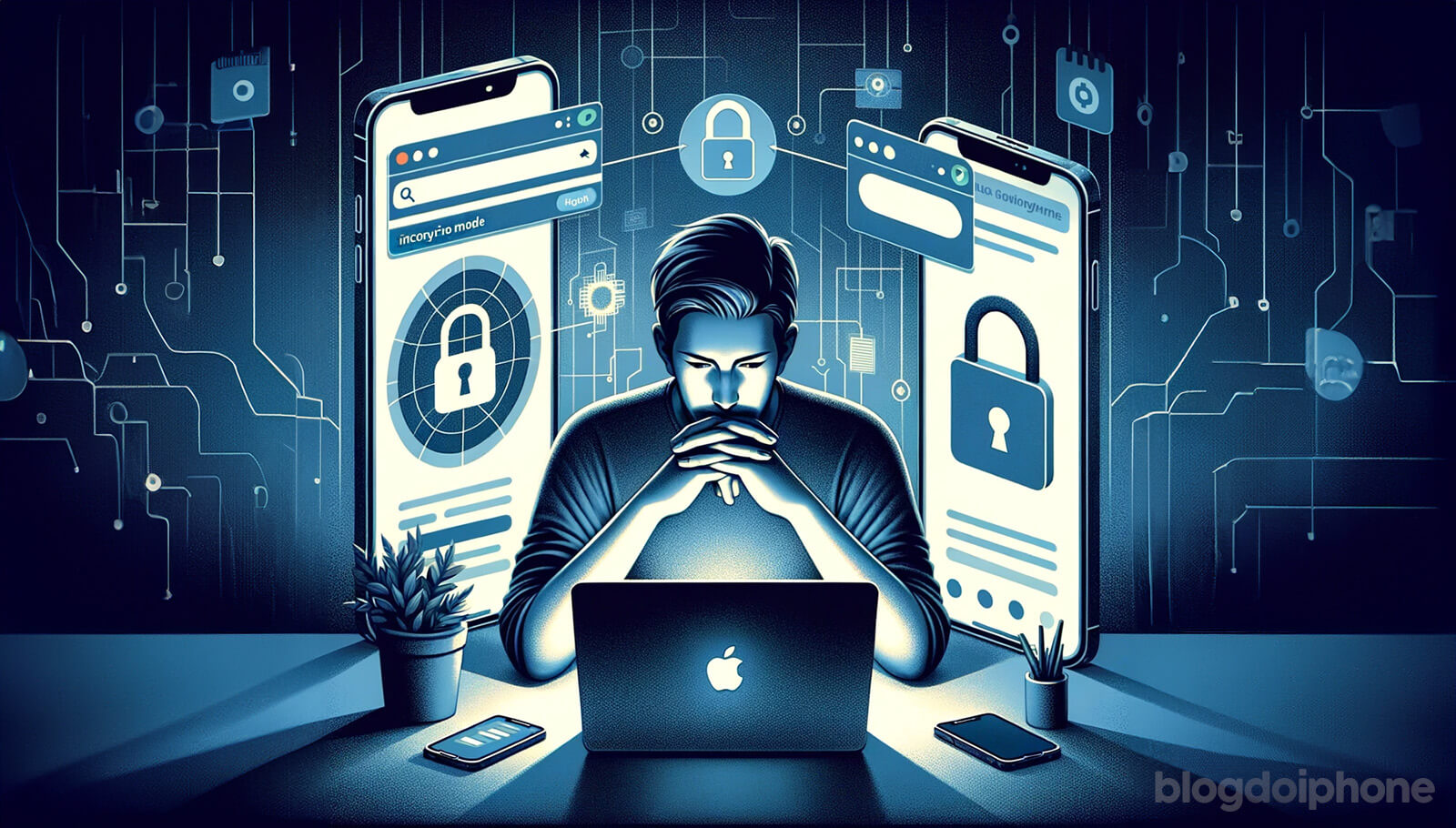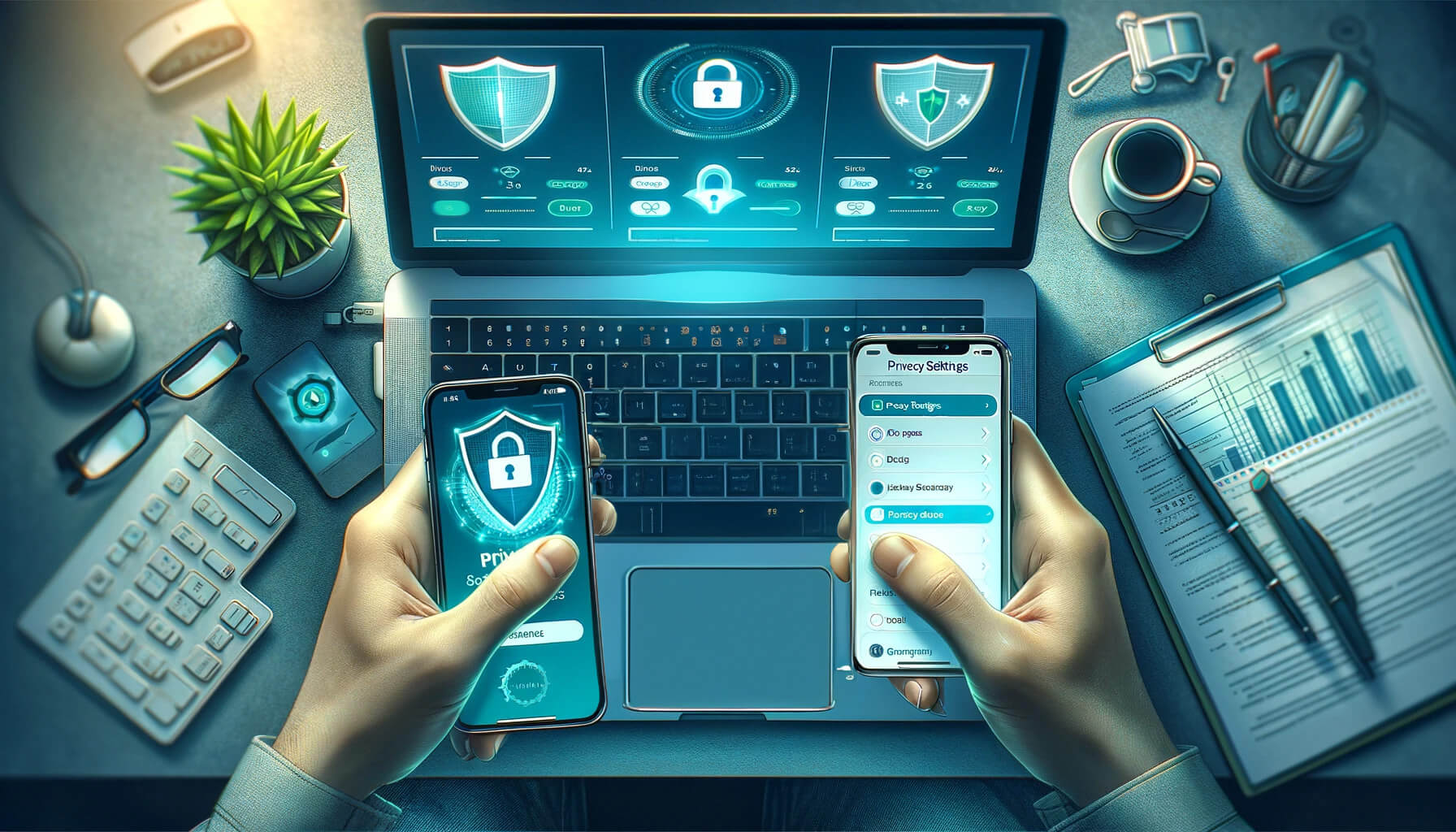How to Browse Anonymously on Your Apple Device (iPhone/Mac)
Safeguard Your Online Privacy with These Essential Tips for iPhone and Mac Users

Many are unaware, but protecting our personal data is one of the most important things today in the digital world. This is because those who do not do so are exposed to manipulations of various kinds, from ideologies that interest an economic/political group to marketing persuasion methods to make you buy things you don’t need.
This article aims to explore methods and tools available for iPhone, iPad, and Mac users who wish to preserve their online privacy, keeping their internet activities away from prying eyes.
By covering everything from built-in options on Apple devices to third-party solutions, we will outline a path to safer and more private browsing.
1. Understanding the Importance of Anonymous Browsing
Anonymous browsing is more than just a convenient feature; it’s an essential practice to protect your privacy and security online.
In a world where data collection has become ubiquitous, understanding the importance of anonymous browsing is the first step towards becoming a more conscious and protected internet user.
Let’s explore the main aspects that highlight the importance of this practice.
1.1 Protection Against Unwanted Tracking
Every day, as you browse the internet, your online activities are constantly monitored and tracked by different entities, including internet service providers (ISPs), marketing agencies, and even cybercriminals.
The information collected can range from browsing histories to sensitive personal data.
Anonymous browsing helps to mask your digital identity, significantly reducing the ability of these entities to track your online activities.
1.2 Prevention Against Data Collection
Data collection is not limited to tracking which sites you visit; it also includes analyzing your consumption habits, personal preferences, and even location information.
This data is often sold or shared among companies for targeted advertising purposes, which not only is a privacy invasion but can also lead to invasive online experiences, with ads and personalized content following you around the internet.
1.3 Security Against Cybercrimes
Online tracking is not just a privacy issue but also a security concern.
Cybercriminals can use the information collected through tracking to carry out targeted attacks, such as phishing and scamming.
Anonymous browsing makes it harder for these criminals to collect enough data to personalize these attacks, providing an additional layer of security.
1.4 Freedom of Expression
In some regions of the world, freedom of expression on the internet is severely limited by governments or institutions.
Anonymous browsing allows individuals to seek and share information, participate in discussions, and express their opinions without fear of retaliation or censorship. This is especially important for activists, journalists, and anyone living in areas with severe restrictions on freedom of expression.
1.5 Access to Unbiased Information
Online tracking and content personalization can lead to the creation of a “filter bubble,” where the information you receive is heavily influenced by your past internet behaviors.
This can limit your exposure to divergent viewpoints and important information. Anonymous browsing helps avoid this bias, ensuring more impartial access to information.
PROTECT YOUR CONNECTION WITH SURFSHARK →

2. Privacy Settings in iOS and macOS
The iOS and macOS operating systems from Apple offer a variety of privacy settings that allow users to manage and protect their personal information.
Adjusting these settings is a crucial step for any user wishing to browse more anonymously and securely.
Let’s explore the most important privacy settings available in iOS and macOS and how they can be optimized to maximize user privacy.
2.1 App Permission Management
Both iOS and macOS allow users to control which apps have access to sensitive data and system resources, such as camera, microphone, location, contacts, and photos. It’s vital to regularly review these permissions:
- iOS: Go to Settings › Privacy to review and adjust the permissions for each app.
- macOS: In the Apple menu, select System Preferences › Security & Privacy › Privacy to make similar adjustments.
2.2 Limiting Ad Tracking
Both operating systems offer settings to limit ad tracking, reducing the amount of data collected by apps and websites for advertising purposes:
- iOS: Within Settings › Privacy, navigate to “Advertising” and enable the “Limit Ad Tracking” option.
- macOS: Go to System Preferences › Security & Privacy › Privacy, select “Advertising” and activate “Limit Ad Tracking.”
2.3 Safe Browsing in Safari
Safari, the default browser on Apple devices, has several settings to protect user privacy during browsing:
- Prevent Cross-Site Tracking: Blocks third-party cookies and website data attempting to track your browsing across different sites.
- Privacy Report: Shows which trackers have been blocked during your browsing.
- Private Browsing Mode: Prevents the storage of browsing history, cookies, and auto-fill information.
2.4 Using iCloud with Privacy
iCloud offers several useful features, but it’s important to manage privacy settings to ensure your data is secure:
- Disable syncing of sensitive data you do not want to store in the cloud, such as notes, contacts, and calendars.
- Use two-factor authentication to add an extra layer of security to your iCloud account.
2.5 Using VPN and Wi-Fi Networks
To protect your privacy when using public Wi-Fi networks or to hide your IP address:
- Set up a reliable VPN in the network settings of iOS and macOS to encrypt all data traffic.
- Be cautious when connecting to public Wi-Fi networks, preferring known and password-protected networks.

3. Using VPNs on Apple Devices
The use of Virtual Private Networks (VPNs) is a fundamental strategy for those seeking to browse anonymously and securely on Apple devices.
VPNs encrypt internet traffic, hiding the user’s geographical location and protecting their data from improper interceptions.
This section covers how VPNs work on Apple devices, the benefits of using them, and how to choose the right VPN service.
3.1 Understanding How VPNs Work
A VPN creates a secure tunnel between the user’s device and the internet, redirecting the connection through a remote server operated by the VPN service.
This not only encrypts the transmitted data but also masks the user’s IP address, making them anonymous to websites and online service providers.
In the Apple ecosystem, both iOS and macOS offer integrated support for various VPN configurations, allowing for easy installation and use.
3.2 Benefits of Using VPNs on Apple Devices
- Enhanced Privacy: By hiding the IP address and encrypting data traffic, a VPN ensures that the user’s online activities remain private and secure.
- Security on Public Wi-Fi Networks: Using a VPN on public Wi-Fi networks protects against potential data interceptions by cybercriminals.
- Access to Geographically Restricted Content: A VPN can simulate the user’s location in different regions, allowing access to online content and services that would otherwise be inaccessible.
3.3 How to Choose a VPN for Apple Devices
When selecting a VPN for iOS or macOS devices, consider the following factors:
- Reputation and Reliability: Choose a VPN provider with a strong reputation for reliability and a strict no-logs policy for user data.
- Compatibility: Ensure the VPN service offers dedicated and compatible apps for Apple devices.
- Security and Encryption Protocols: Opt for services that use advanced encryption protocols to ensure the highest security of your data.
- Speed and Connection Stability: A good VPN should offer a fast and stable connection, minimizing impacts on browsing speed.
- Customer Support: Make sure the provider offers effective and accessible customer support.
3.4 Setting Up a VPN on Apple Devices
Setting up a VPN on iOS and macOS devices is very easy, simply install the app which does all the system adjustments for you.
If you subscribe to the service outside the App Store, you can ensure a much more advantageous price. Surshark, for example, is offering a promotion with big discounts on annual and biennial plans, in addition to offering extra months for free.
4. Regular Cleaning of Browsing Data
Maintaining online privacy does not end with the use of VPNs, privacy-focused browsers, password managers, or two-factor authentication.
Regular cleaning of browsing data is a crucial practice to remove digital traces that accumulate during internet use on Apple devices.
This section addresses the importance of this practice, what should be cleaned, and how to effectively perform the cleaning.
4.1 The Importance of Cleaning Browsing Data
Every visited website, every performed search, and every used online service can leave a trail of data on your device.
This data includes browsing history, cookies, form data, saved passwords, and cache information.
If not regularly cleaned, they can not only take up precious space on the device but also serve as a detailed record of your online activity accessible to third parties.
4.2 What to Clean
To maintain good digital hygiene, the following data should be regularly cleaned:
- Browsing History: Records of the sites you have visited.
- Cookies and Site Data: Small files that websites use to track your navigation and preferences.
- Browser Cache: Stores parts of web pages for faster loading on future visits.
- Form and Search Data: Information you entered in search fields or online forms.
- Saved Passwords: While convenient, storing passwords in the browser can pose a security risk if the device is compromised.
4.3 How to Clean Browsing Data on iOS and macOS
- In Safari (iOS): Open “Settings” > “Safari” and tap on “Clear History and Website Data” to remove all browsing records, cookies, and cache data.
- In Safari (macOS): In Safari, select “Safari” in the top menu > “Clear History…” and choose the time range you want to clear.
- In Other Browsers: Access the browser’s settings or preferences and look for options to clear browsing data. These options may vary depending on the browser, but are usually located in the privacy or security section of the settings.
4.4 Automating the Cleaning of Browsing Data
For ongoing privacy maintenance, consider setting your browser to automatically clear browsing data on exit:
- Safari (macOS): In the “Safari” menu, go to “Preferences” > “Privacy” and check the option “Remove history items and website data when quitting Safari”.
- Third-Party Browsers: Many offer similar settings. Check the privacy options in the browser’s preferences.
Conclusion
The journey to protect online privacy in an increasingly digitalized world is complex and multifaceted.
The practices of anonymous browsing presented in this article are essential for any Apple device user who values the security of their personal information.
However, it’s important to recognize that while individual measures can offer significant layers of protection, true internet security begins with awareness and digital education.
Adopting these strategies not only strengthens the privacy and security of the individual user but also contributes to a safer and more private online environment for everyone.
As we become more informed about the risks and tools available to mitigate them, we are better equipped to navigate cyberspace responsibly and safely.
This is a promotional article, requested by Surfshark. To learn about our policy for such articles, check out this page.